Molecular profiling of stomatal meristemoids reveals new component of asymmetric cell division and commonalities among stem cell populations in Arabidopsis
- PMID: 21963668
- PMCID: PMC3203429
- DOI: 10.1105/tpc.111.088583
Molecular profiling of stomatal meristemoids reveals new component of asymmetric cell division and commonalities among stem cell populations in Arabidopsis
Abstract
The balance between maintenance and differentiation of stem cells is a central question in developmental biology. Development of stomata in Arabidopsis thaliana begins with de novo asymmetric divisions producing meristemoids, proliferating precursor cells with stem cell-like properties. The transient and asynchronous nature of the meristemoid has made it difficult to study its molecular characteristics. Synthetic combination of stomatal differentiation mutants due to loss- or gain-of-function mutations in SPEECHLESS, MUTE, and SCREAM create seedlings with an epidermis overwhelmingly composed of pavement cells, meristemoids, or stomata, respectively. Through transcriptome analysis, we define and characterize the molecular signatures of meristemoids. The reporter localization studies of meristemoid-enriched proteins reveals pathways not previously associated with stomatal development. We identified a novel protein, POLAR, and demonstrate through time-lapse live imaging that it exhibits transient polar localization and segregates unevenly during meristemoid asymmetric divisions. The polar localization of POLAR requires BREAKING OF ASYMMETRY IN THE STOMATAL LINEAGE. Comparative bioinformatic analysis of the transcriptional profiles of a meristemoid with shoot and root apical meristems highlighted cytokinin signaling and the ERECTA family receptor-like kinases in the broad regulation of stem cell populations. Our work reveals molecular constituents of stomatal stem cells and illuminates a common theme among stem cell populations in plants.
Figures
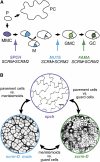
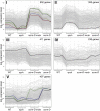
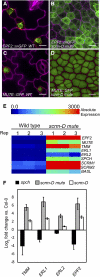
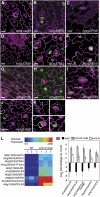


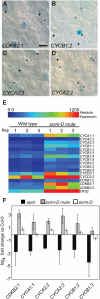

Similar articles
-
A new loss-of-function allele 28y reveals a role of ARGONAUTE1 in limiting asymmetric division of stomatal lineage ground cell.J Integr Plant Biol. 2014 Jun;56(6):539-49. doi: 10.1111/jipb.12154. Epub 2014 Mar 6. J Integr Plant Biol. 2014. PMID: 24386951
-
SCREAM promotes the timely termination of proliferative divisions in stomatal lineage by directly suppressing SPEECHLESS transcription.New Phytol. 2025 Jun;246(6):2565-2579. doi: 10.1111/nph.70145. Epub 2025 Apr 24. New Phytol. 2025. PMID: 40275539
-
Timely expression of the Arabidopsis stoma-fate master regulator MUTE is required for specification of other epidermal cell types.Plant J. 2013 Sep;75(5):808-22. doi: 10.1111/tpj.12244. Epub 2013 Jun 21. Plant J. 2013. PMID: 23662679
-
Lineage-specific stem cells, signals and asymmetries during stomatal development.Development. 2016 Apr 15;143(8):1259-70. doi: 10.1242/dev.127712. Development. 2016. PMID: 27095491 Review.
-
The plant stomatal lineage at a glance.J Cell Sci. 2019 Apr 26;132(8):jcs228551. doi: 10.1242/jcs.228551. J Cell Sci. 2019. PMID: 31028153 Free PMC article. Review.
Cited by
-
SPEECHLESS integrates brassinosteroid and stomata signalling pathways.Nat Cell Biol. 2012 Apr 1;14(5):548-54. doi: 10.1038/ncb2471. Nat Cell Biol. 2012. PMID: 22466366
-
Opposite polarity programs regulate asymmetric subsidiary cell divisions in grasses.Elife. 2022 Dec 20;11:e79913. doi: 10.7554/eLife.79913. Elife. 2022. PMID: 36537077 Free PMC article.
-
Connected function of PRAF/RLD and GNOM in membrane trafficking controls intrinsic cell polarity in plants.Nat Commun. 2022 Jan 10;13(1):7. doi: 10.1038/s41467-021-27748-w. Nat Commun. 2022. PMID: 35013279 Free PMC article.
-
Stomatal Development and Perspectives toward Agricultural Improvement.Cold Spring Harb Perspect Biol. 2019 May 1;11(5):a034660. doi: 10.1101/cshperspect.a034660. Cold Spring Harb Perspect Biol. 2019. PMID: 30988007 Free PMC article. Review.
-
Chemical genetics reveals cross-activation of plant developmental signaling by the immune peptide-receptor pathway.bioRxiv [Preprint]. 2024 Jul 30:2024.07.29.605519. doi: 10.1101/2024.07.29.605519. bioRxiv. 2024. Update in: Sci Adv. 2025 Feb 07;11(6):eads3718. doi: 10.1126/sciadv.ads3718. PMID: 39131359 Free PMC article. Updated. Preprint.
References
-
- Abrash E.B., Bergmann D.C. (2009). Asymmetric cell divisions: A view from plant development. Dev. Cell 16: 783–796 - PubMed
-
- Benjamini Y., Hochberg Y. (1995). Controlling the false discovery rate: A practical and powerful approach to multiple testing. J. R. Stat. Soc. B 57: 289–300
-
- Bergmann D.C., Lukowitz W., Somerville C.R. (2004). Stomatal development and pattern controlled by a MAPKK kinase. Science 304: 1494–1497 - PubMed
-
- Bergmann D.C., Sack F.D. (2007). Stomatal development. Annu. Rev. Plant Biol. 58: 163–181 - PubMed
Publication types
MeSH terms
Associated data
- Actions
- Actions
LinkOut - more resources
Full Text Sources
Other Literature Sources
Medical
Molecular Biology Databases
Research Materials

